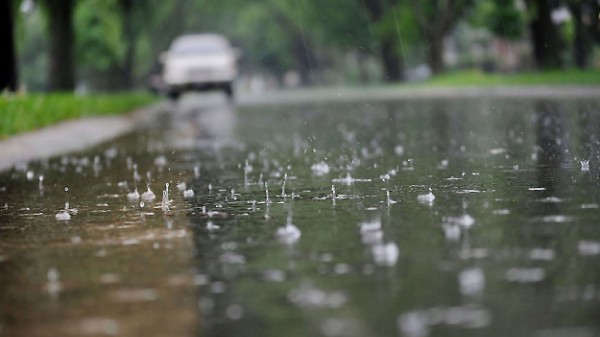There is an old saying that “two heads are better than one” when it comes to reasoning and perceptual decision-making. That might well be true, but are two soloists in classical music better than one? This seems a tricky question as the word “concerto” can mean both to contend, dispute, and debate, but also “to work together with someone.” And there is lots of musical and interpretive cooperation needed when it comes to the “Double Concerto.” The definition of that genre is straightforward, as it simply reads “a composition for two solo instruments with orchestra.” The kinds of instruments are left to the imagination of the composers, and while we are primarily used to hearing solo concertos these days, double concertos used to be very popular with composers and performers alike.
C.P.E. Bach: Concerto in E-flat Major for Harpsichord and Fortepiano, H. 479
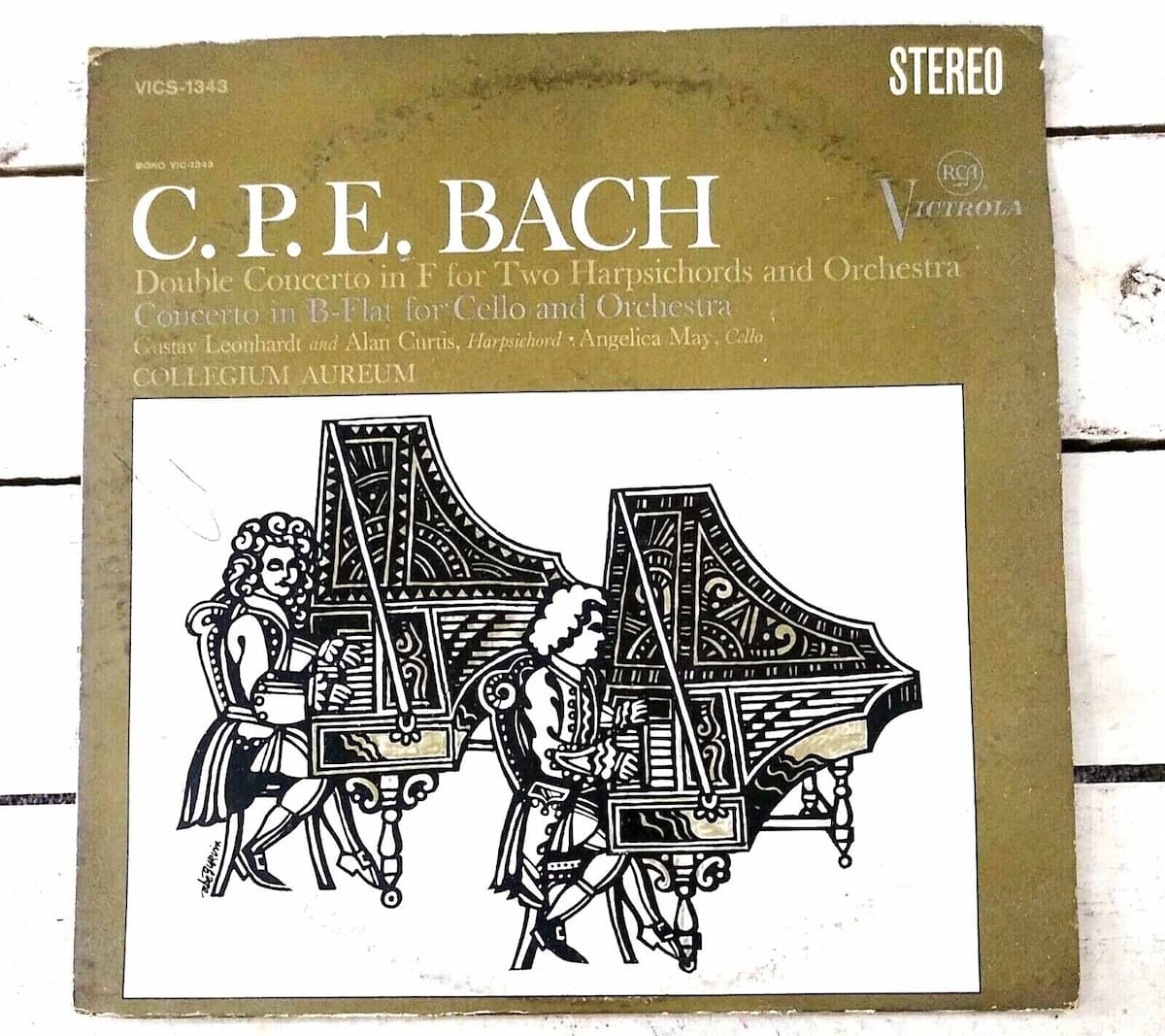
C.P.E. Bach’s Double Concerto
So I decided to write a little blog featuring 10 of the most exciting double concertos in the repertoire. And my starting point is Johann Sebastian Bach’s eldest son Carl Philipp Emanuel. As a keyboard composer, he was a true pioneer, “imitating the cantabile melody of applied music,” and incorporating improvisatory passages of dazzling virtuosity. Just have a listen to his Concerto for Harpsichord and Fortepiano, which dates from 1788.
Elliott Carter: Double Concerto for harpsichord, piano and two chamber orchestras
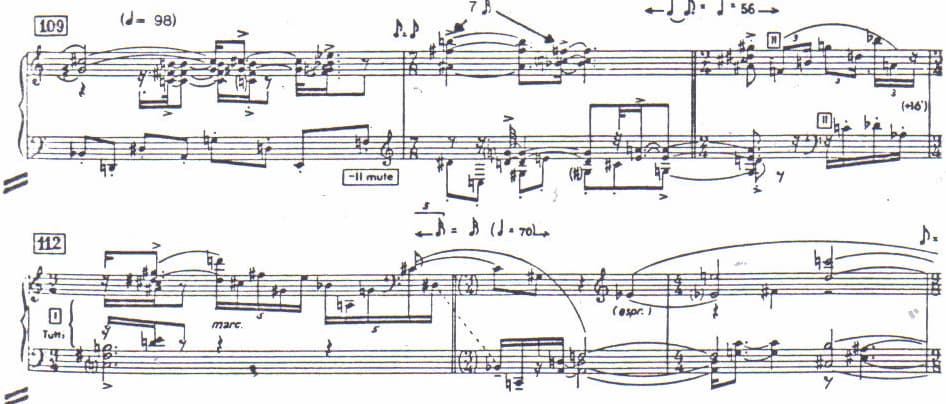
Elliott Carter: Double Concerto for harpsichord, piano and two chamber orchestras
Personally, I think that the C.P.E. Bach Double concerto is a masterpiece, and the same has been said of the double concerto for the same basic setup by American composer Elliott Carter. Mind you, that particular double concerto dates from 1961. And while the musical language is certainly very different, Carter’s double concerto strives for the same delicate balance between the two different keyboard instruments. Of course, the percussion is an added 20th-century bonus. But you don’t have to take my word for it, as Igor Stravinsky regarded the Carter double concerto as a masterpiece. The composer Harrison Birtwistle wrote of the piece, “I love the Double Concerto for piano, harpsichord and two chamber orchestras. There’s nothing like it in music: the concept, the way it makes time and rhythm move, the instrumentation, and that bloody harpsichord!” Pianist Charles Rosen first performed the piano solo part, and he called it “the most brilliantly attractive and apparently most complex work.” And he adds, “The absence of a central pulse adds to the liberating excitement.”
Felix Mendelssohn: Concerto for Two Pianos in E Major
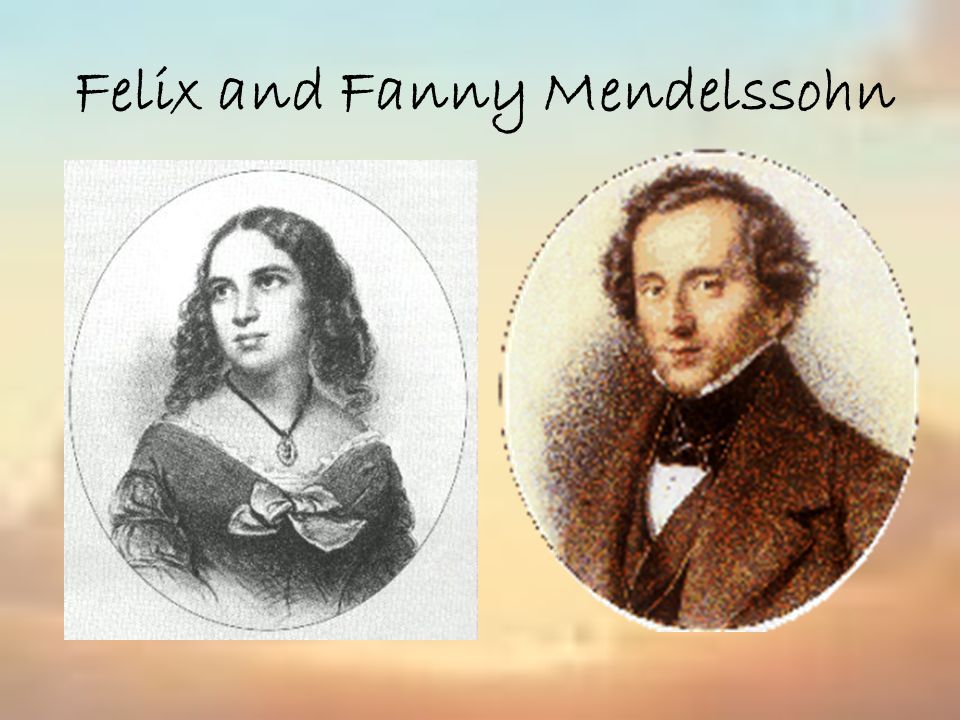
Fanny and Felix Mendelssohn
Lots of double concertos were composed between C.P.E Bach and Elliott Carter, and it’s time to turn to the music of Felix Mendelssohn. He clearly was one of the rare universal geniuses, and by the age of 15 he had already composed 12 string sinfonias, various sonatas for viola and for violin, religious choral pieces, numerous piano compositions, and was busily working on his fourth opera. One of his early compositions is the Concerto for 2 pianos in E Major. It was composed as a birthday gift for his equally talented sister Fanny Mendelssohn. The work unfolds in 3 movements, and the opening “Allegro” starts with an extended orchestral introduction, which could easily have been written by Mozart. After the pianos enter, one at the time, we hear a delightful musical dialogue between two equal partners. But it’s not all Mozart imitation, as we also hear sudden chromatic shifts, surprise cadences, and almost instantaneous shifts in atmosphere—all features we clearly associate with the music of Mendelssohn.
Wolfgang Amadeus Mozart: Concerto for 2 pianos in E-flat Major, K. 365
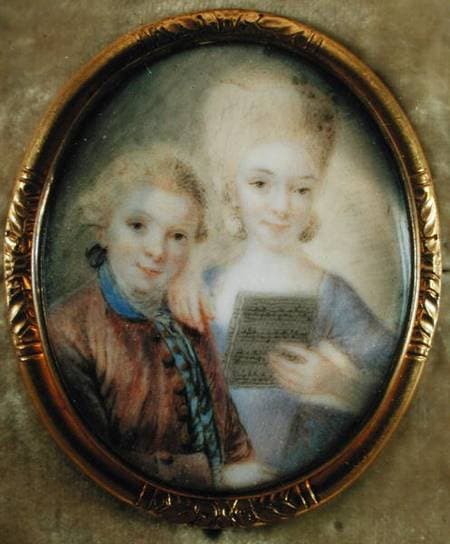
Wolfgang and Nannerl Mozart
You heard me mention Mozart in connection with the Mendelsohn double concerto. Mendelssohn had a ferocious musical mind, and he devoured any and all kinds of music, basically everything he could get his hands on. And that surely included the glorious Concerto for 2 pianos in E-flat Major, K. 365 by Wolfgang Amadeus Mozart. Mozart composed the work in the late 1770s, around the same time as another great double concerto, the Sinfonia Concertante for violin and viola. It has been suggested that Mozart wrote the concerto for two pianos to perform with his sister Nannerl, but there is no record of them playing the work. However, we do know that Mozart performed the work with his student Josepha Auernhammer in Vienna in 1781 and 1782. Mozart was trying to make an impression on the city of Vienna, and he selected this concerto to show some of his best work. It is possible that Mozart enlarged the orchestra, adding clarinets, trumpets, and timpani for these performances, to make an even more brilliant impression. We still don’t know to this day, however, if these orchestral additions are in fact by Mozart or not.
Johann Sebastian Bach: Concerto for two violins in D minor, BWV 1043
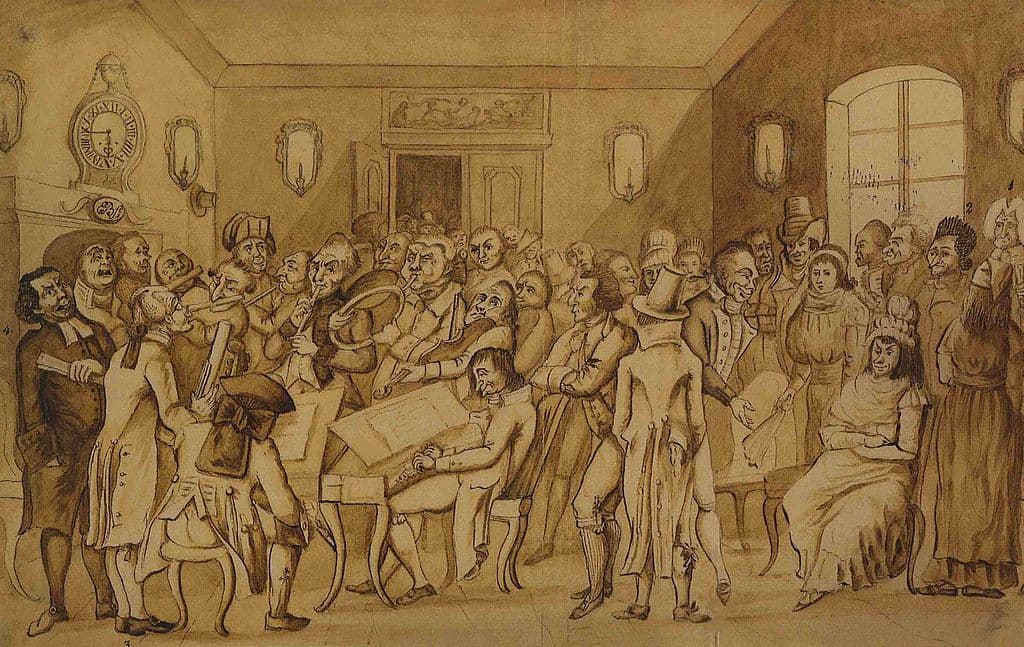
Collegium Musicum in Leipzig, 1790
Pianos are fun, but double concertos have been written for other instruments as well. Did you really think that I would not feature my favorite composer of all time, Johann Sebastian Bach? And we are lucky indeed that Bach left us with the Concerto for Two Violins in D minor, BWV 1043, one of the most magnificent double concertos in the repertoire. It really is surprising that a substantial number of Bach’s compositions cannot be dated with certainty. And that is certainly true for many of his concertos, as many are arrangements of previous versions. There is lots of scholarly squabbling going on, and it all depends on which argument you would like to believe. Some say that the work originated during Bach’s tenure at the court of Cöthen between 1717 and 1723. Others have argued that it comes from Bach’s appointment as the director of the Collegium Musicum in Leipzig after 1730. And we also know that Bach himself produced a transposed arrangement of this concerto for two harpsichords in 1739. While we might not be sure of the exact date, we certainly hear a work of remarkably expressive intensity. The themes are full-bodied and highly irregular and presented with Bach’s tremendous and glorious urgency.
Johannes Brahms: Concerto for Violin, Cello and Orchestra in A minor, Op. 102
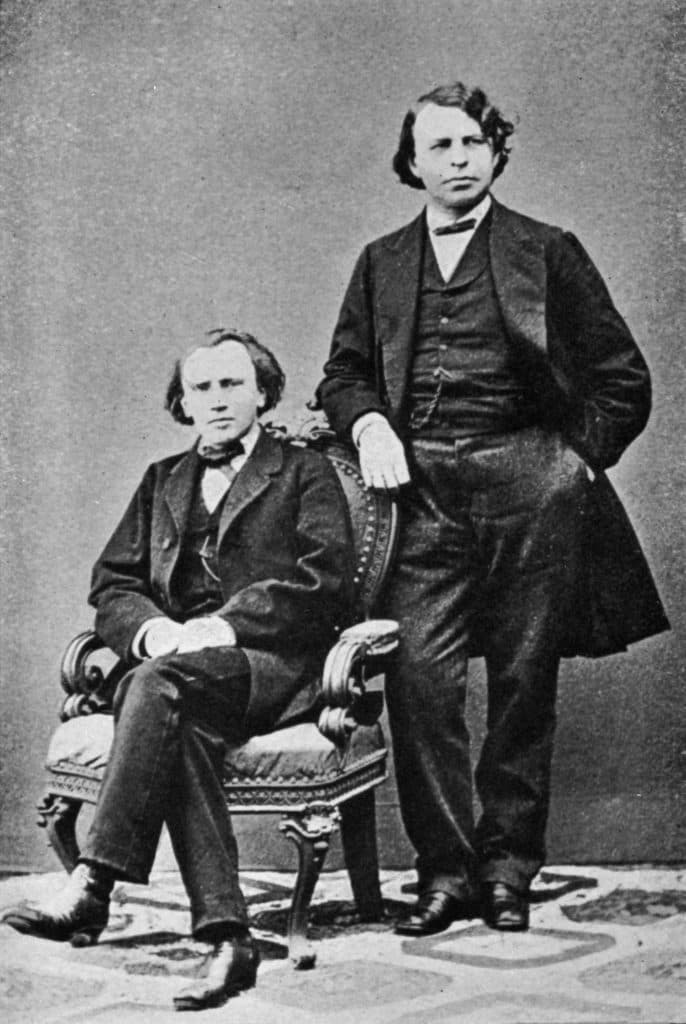
Joseph Joachim and Johannes Brahms, 1855
From “B” for Bach, let’s move next to “B” for Brahms. Life works in mysterious ways, and the Brahms Concerto for Violin, Cello and Orchestra in A minor, Op. 102, owes its existence to a divorce, at least partially. One of his best friends, the violinist Joseph Joachim accused his wife Amalie Weiss of infidelity with Brahms’ music publisher. Brahms did not believe Joachim’s accusation, and he wrote a sympathetic letter to Amalie. Unfortunately, when Joachim filed for divorce, that letter ended up as evidence. Brahms had written, “With no thought have I ever acknowledged that your husband might be in the right. At this point, I perhaps hardly need to say that, even earlier than you did, I became aware of the unfortunate character trait with which Joachim so inexcusably tortures himself and others… The simplest matter is so exaggerated, so complicated, that one scarcely knows where to begin with it and how to bring it to an end.” The judge was certainly convinced and quickly ruled in Amalie’s favor. Always professional, Joachim continued to perform and promote the music of Brahms, but the two did not speak again for four long years. In 1887, Brahms remembered that he had promised to write a piece for the cellist Robert Hausmann, and so he decided to kill two birds with one stone by also including Joachim. Without doubt, the friendship was in need of patching up, and Joachim enthusiastically agreed.
Frederick Delius: Concerto for Violin, Cello and Orchestra
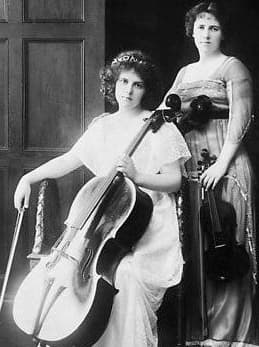
Cellists May and Beatrice Harrison, c. 1920s
The idea of featuring a violin and cello soloist in a double concerto also appealed to Frederick Delius (1862-1934). In fact, hearing the sisters May and Beatrice Harrison in a Hallé Orchestra concert performing Brahms’s Double Concerto in 1914, certainly kindled his interest. The Harrison sisters were celebrated figures in British music, and both became closely associated with Delius’ music. Shortly after the Brahms performance, Delius apparently said to Beatrice, “Your performance was superb, so much so that I am inspired to write a double concerto and dedicate it to you and your sister.” The composer frequently consulted the Harrison sisters, and May reports, “When Delius began the Double Concerto at our house in Cornwall Gardens he wrote a lot of it in unison. We both said, ‘you can’t do that, it doesn’t sound right.’ And when we played bits he said, ‘No, you are quite right. I see what you mean.’ Delius used to come over with two pages, sit at the piano and then say, ‘This is what I want.’ He then bring two more pages and so in this way it was built up.” In the end, Delius built his double concerto in 5 undulating and entwined movements.
Frederick Delius: Concerto for Violin, Cello and Orchestra (Tasmin Little, violin; Paul Watkins, cello; BBC Symphony Orchestra; Andrew Davis, cond.)
Joseph Haydn: Double Concerto for Harpsichord, Violin and Strings in F Major

Maria Anna Keller
It is called Haydn’s “only surviving concerto for two solo instruments,” but it was probably originally intended for the organ. I am talking about the Concerto in F Major for Harpsichord, Violin and Strings, Hob.XVIII:6. It appears to have been written for Therese Keller, his future sister-in-law, who decided to become a nun in 1756. However, there is a backstory to this double concerto. Therese Keller was the daughter of a wigmaker, and a student of Haydn. He taught her to play the piano and fell head over heels in love with her. Therese, as it turns out, had been earmarked by her family for religious life, and she eventually did join a nunnery. Haydn, however, was considered a good catch as he was already earning money from the aristocracy and he had recently composed his first symphony. So the Keller family came up with the glorious idea that Therese’s older sister Maria Anna might be a suitable replacement. Haydn wasn’t thrilled and it took him almost five years to settle on a wedding day. That relationship, as we know, was an unmitigated disaster.
Joseph Haydn: Double Concerto for Harpsichord, Violin and Strings in F Major (Ariadne Daskalakis, violin; Harald Hoeren, fortepiano; Cologne Chamber Orchestra; Helmut Müller-Brühl, cond.)
Johann Nepomuk Hummel: Concerto for Violin and Piano in G Major, Op. 17
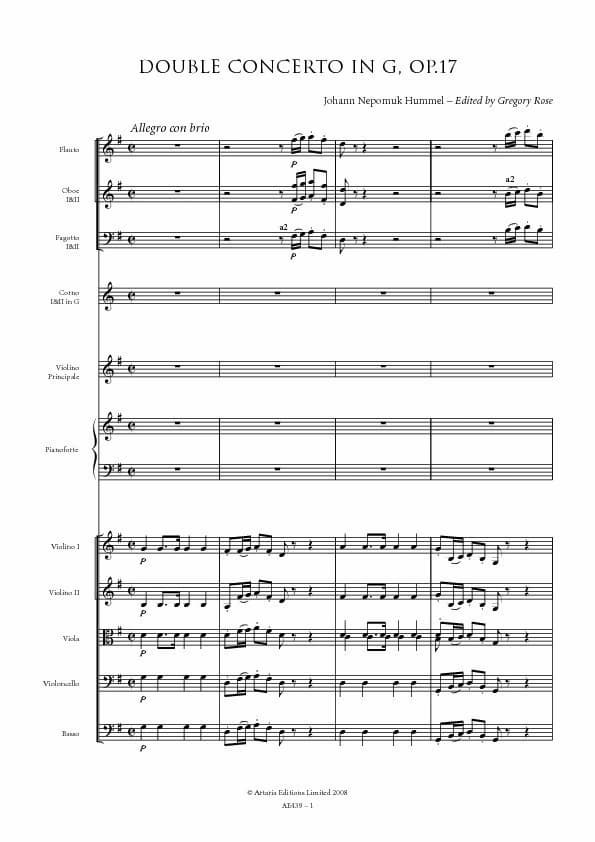
Johann Nepomuk Hummel: Concerto for Violin and Piano in G Major, Op. 17 © Artaria Editions
The combination of the solo piano and solo violin also held some fascination for Johann Nepomuk Hummel (1778-1837). And there is even a closer connection to Haydn himself. Both composers worked for the Esterhazy family in the castle of Eisenstadt. Haydn would stay there for nearly thirty years, while Hummel managed to get himself fired for neglecting his duties after only seven years. Both composers greatly enjoyed the local wine, but Hummel wanted to see the world and eventually became a pianist famous for his technical skills. In fact, only his fellow pianist Ludwig van Beethoven could rival his technical prowess. Hummel’s double concerto dates from 1804, and it is scored in the traditional three concerto movements. Hummel dishes out a delightful interplay between the two solo instruments, maybe slightly less virtuosic than in many solo concertos, but the music flows with consuming ease and beauty. Also noteworthy is the fact that Hummel fully composed his own cadenza for the opening movement. And we can hear an additional Hummel cadenza in the concluding playful Rondo.
Francis Poulenc: Concerto for Two Pianos and Orchestra in D minor
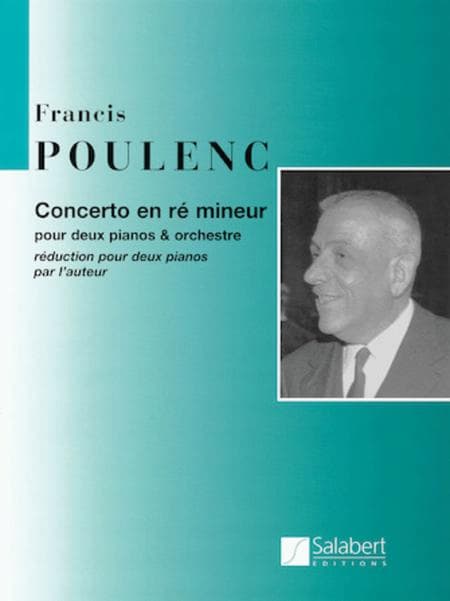
Francis Poulenc: Concerto for Two Pianos and Orchestra in D minor © Sheet Music Plus
With so many great double concertos to choose from, it is very difficult to decide on a good closer. In the end, I decided on a work of childlike exuberance, filled with teasing, innocence, caricature, and the sounds of the Parisian street café. I am talking about the Concerto for Two Pianos by Francis Poulenc. Premiered on 5 September 1932, Poulenc literally found his inspirations around every corner. The opening figuration is thought to have been inspired by Poulenc’s encounter with a Balinese gamelan at the 1931 Exposition Coloniale de Paris. The instrumentation and jazzy effects come from Ravel’s G major Concerto, which premiered in Paris just a couple of months earlier. However, the composer admitted that the opening theme goes all the way back to Mozart because, “I have a veneration for the melodic line and because I prefer Mozart to all other composers.” However, there was one more influence at play. Poulenc wrote in a letter to the Russian-born composer and conductor Igor Markevitch, “Would you like to know what I had on my piano during the two months gestation of the Concerto? The concertos of Mozart, those of Liszt, that of Ravel, and your Partita.” What a fabulous and fun piece to conclude this little survey of the 10 most exciting Double Concertos.
For more of the best in classical music, sign up to our E-Newsletter

